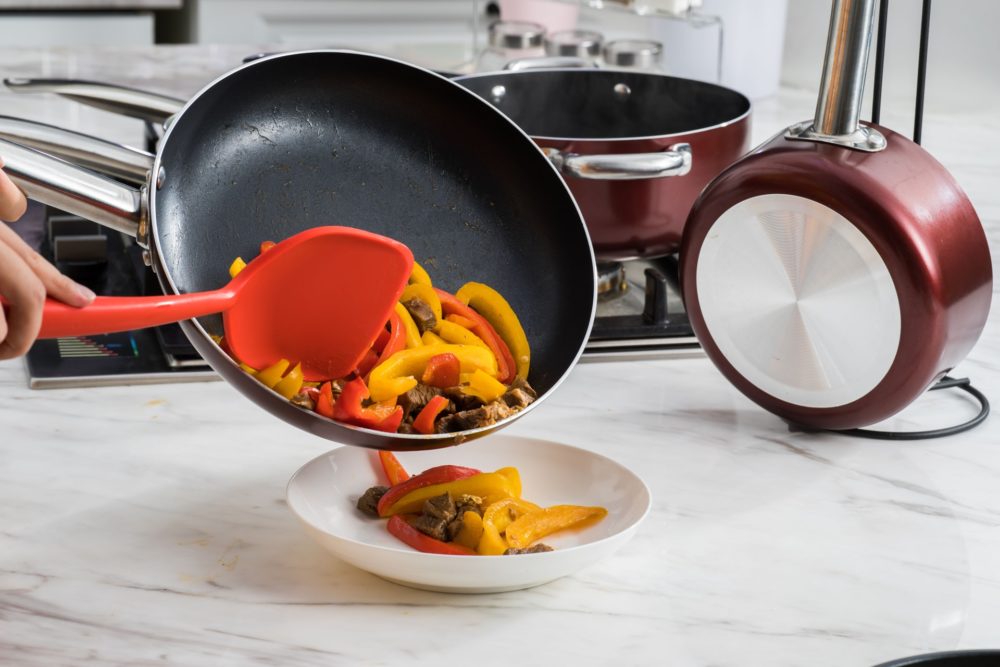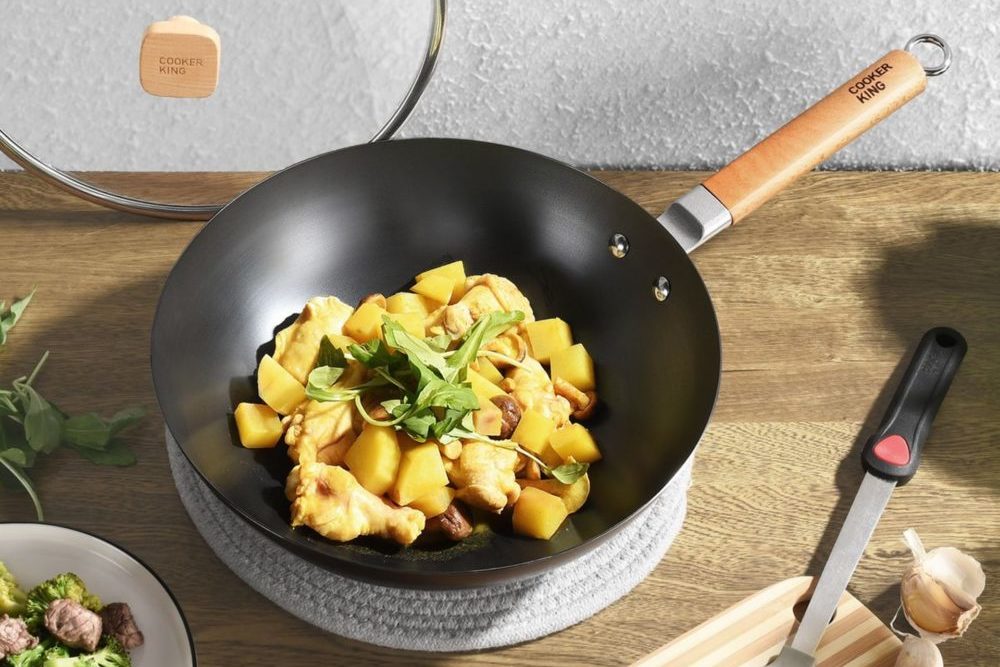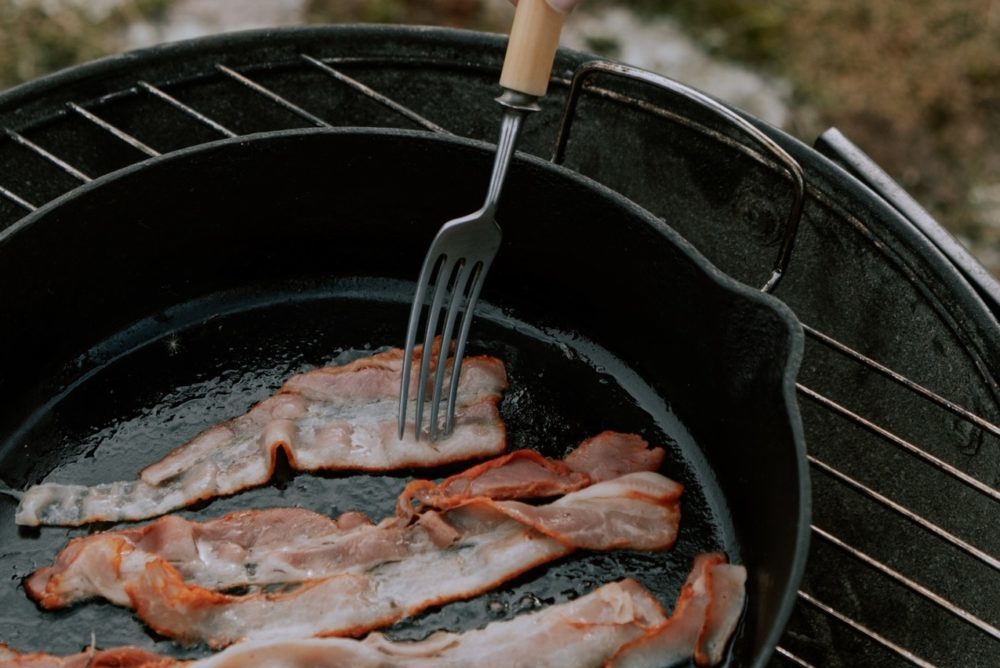Frying pans, whilst designed specifically for job usage, can also be used in an oven. This cannot work for all frying pans, however, as different materials cannot withstand the heat of the oven.
It is important to remember that frying pan handles are there to protect your hands from hot food on the hob, they are not there to withstand hot temperatures like the actual pan itself.
This means that only some frying pans can go in the oven, and it is important to know which ones can and cannot.
What material is oven-safe?
Whether you are looking for an oven-safe frying pan, or you want to know if your existing frying pan is suitable for an oven, understanding the material of the handle is vital.
The actual frying pan itself is built to withstand high temperatures, but some handles are not. The best frying pan materials for oven use include:
- Stainless steel
- Cast iron
- Copper
- Cast aluminum
- Some non-stick pans
- Metal
Handles such as stainless steel will withstand the heat, however they have the potential to hold the heat and burn a hand.
It is therefore important to always handle cooking equipment in the oven with oven gloves or towels for safety, as no material will prevent the heat.
It is also worth noting that whilst some non-stick pans are oven-safe, some are not due to the extreme heat that could ruin the non-stick properties.
We will explain how to understand if a frying pan is oven-safe later in this article.
Rubber handles should be fine for oven-use, but do this with caution and at a low temperature. Metal handles are also designed to withstand high temperatures, so these will be fine in an oven too.
What material is not oven-safe?
The only materials to avoid when putting a frying pan in the oven are plastic handles and some non-stick frying pans.
Plastic handles are excellent for hob-use frying pans, as they prevent hot temperatures from reaching the human hand.
As an oven is undeniably hotter than a hob, and will consume the entire frying pan, plastic handled pans are not recommended for oven-use as they will burn and melt in the extreme heat.
Of course, you can try wrapping a plastic handle frying pan for oven-use, and they can be used on grills with the oven door open, but it is generally not recommended.
As said before, some non-stick frying pans are not designed for the extreme heat of an oven. They can withstand temperatures around 200 degrees celsius, which means they can be used in lower temperatures in an oven.
However, this does risk ruining the non-stick properties, and the coating could easily burn off.
It is also not recommended to use a lid on top of the frying pan in the oven, as lids are designed to maintain the heat of the food. This means the temperature from the oven may be restricted. Also, lids with plastic handles will melt.
How can you tell a frying pan is oven-safe?
The best way to find out if your frying pan is oven safe is by checking all of the details before purchasing.
On the packaging, there should be a symbol that confirms whether the pan is safe for oven-use or not.
Instruction manuals will also be able to explain this in further depth and will offer better advice for that specific frying pan.
As explained before, frying pans with no non-stick coating are more likely to be oven-safe than non-stick frying pans - however, this is still worth checking regardless, as some non-stick frying pans can withstand the temperature from an oven.
You will also be able to assume if a frying pan can or cannot go in an oven by its handle material. If the material is stainless steel, copper, or cast iron for example, it will be fine in an oven. If the material is plastic, it will not be suitable for oven-use as it will melt.
This is easiest if you are purchasing a new frying pan, however if you do not have the original packaging from your own frying pan, it is worth consulting with the manufacturer.
What can you cook in a frying pan in an oven?
The kitchen is all about creativity, and for some avid cookers who perhaps cannot afford all of the necessary equipment for their oven, a frying pan might have to suffice.
Ovens allow a multitude of various functions, so even frying pans that do have a plastic handle can technically be oven safe - only if the handle is sticking out of the door. This, of course, is not doable on the normal fan oven option, however it can be used in the grill function.
Take an omelette for example. You’ve friend and semi-cooked the omelette, but you want the golden brown layering on top for the extra taste. You can put the frying pan in the oven, near the top by the grill, with the door ajar and the handle sticking out.
It doesn’t have to be in there for long and doesn’t have to be on a high temperature. This means you have easy access to removing the frying pan when the food is cooked to your liking.
The same goes for the majority of fried food, such as bacon, eggs, meat, or vegetables.
Conclusion
So, there you have it. To put it simply, some frying pans can go in the oven and some cannot.
It all depends on the material of the frying pan handle, whether the pan has a non-stick coating, and your intentions for using a frying pan as your oven equipment.
If you are looking for a frying pan solely for oven-use, it might be worth investing in oven-specific equipment, but having a frying pan that can withstand the oven heat is a versatile option for cooking.
In short, avoid plastic handles, read the packaging carefully, stick to materials that can withstand high temperatures, and use oven gloves regardless.






